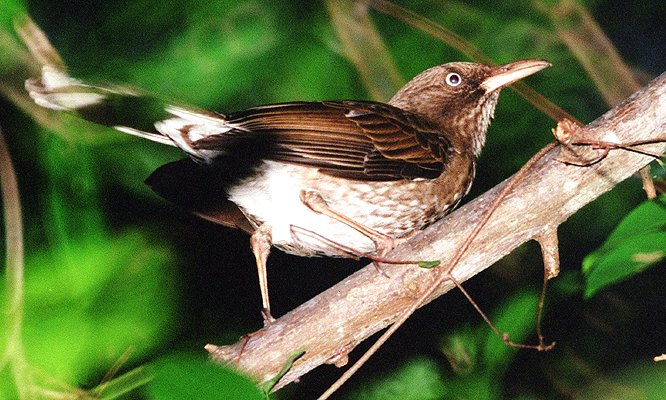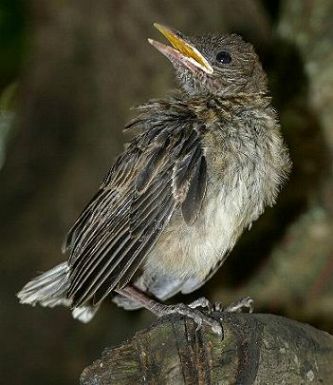|
Pearly-eyed Thrasher Margarops fuscatus Zorzal Pardo,
|
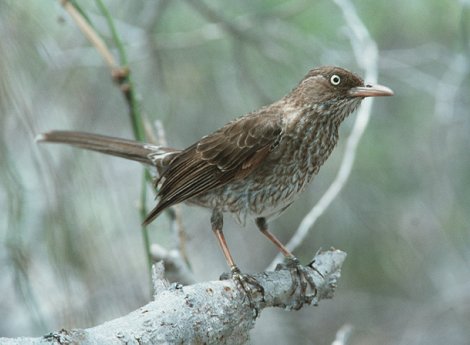 |
|
Photo: B. Hallett
|
|
IDENTIFICATION: A long-tailed bird, related to the conspicuous Northern Mockingbird. The upper parts are brown, and underparts are white, streaked with brown. The light-colored eye contrasts with the brown head. In flight the white tail markings often are striking. Length: 28-30 cm.; weight: 95-101 g. VOICE: The song is a series of two or three melodic phrases separated by a pause, described as "wheur, tel leur, tsee." Audio 2 (M. Oberle). It also makes a loud, whining alarm note, and has a variety of single call notes, sometimes quite faint. HABITAT: Bushes and trees in gardens, mountain forests, shade coffee plantations. HABITS: The Pearly-eyed Thrasher is a curious, aggressive opportunist that feeds mostly on large insects, such as crickets, beetles, and walking sticks. It also eats fruits and berries, and sometimes lizards, frogs, small crabs, and other birds' eggs and nestlings. It makes its stick nest in a tree cavity and lays 2-4 blue eggs. STATUS AND CONSERVATION: A common species, even in metropolitan gardens, but it has a patchy distribution. The Pearly-eyed Thrasher was rare on the main island of Puerto Rico at the beginning of the 20th Century, but has since become common. It is possible that the species only expanded its range into Puerto Rico in recent centuries. The thrasher attacks a variety of nestlings, possibly to reduce food competition or discourage nesting in scarce nest cavities. In one study at Roosevelt Roads, 43% of White-crowned Pigeon nests experienced thrasher predation. The thrasher’s habit of preying on other birds' eggs and chicks makes it a local threat to some endangered species, such as the Puerto Rican Parrot. RANGE: Found in the Bahamas, Puerto Rico and most of the eastern Caribbean. TAXONOMY: PASSERIFORMES; MIMIDAE |
|
 |
|
Photo: A. Sánchez Muñoz
|
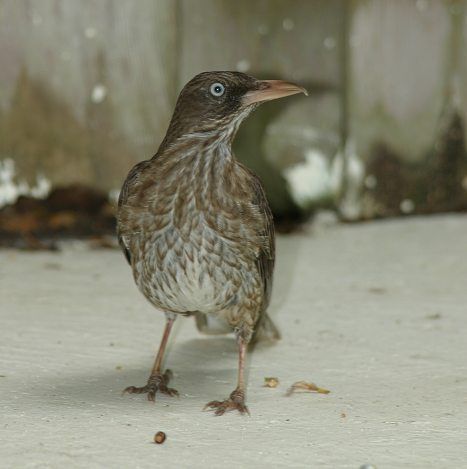 |
|
Photo: A. Sánchez Muñoz
|
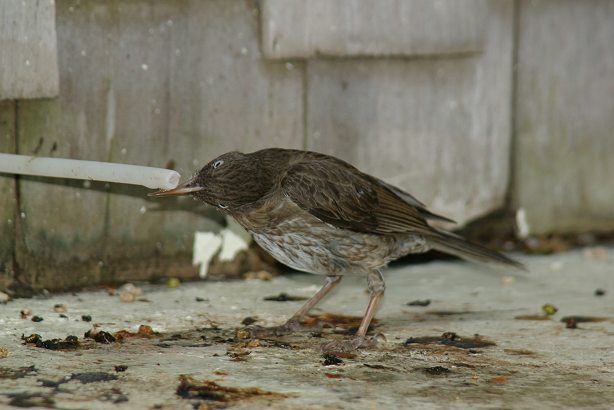 |
|
Photo: A. Sánchez Muñoz
|
 |
|
|
Photo: M. Oberle
|
